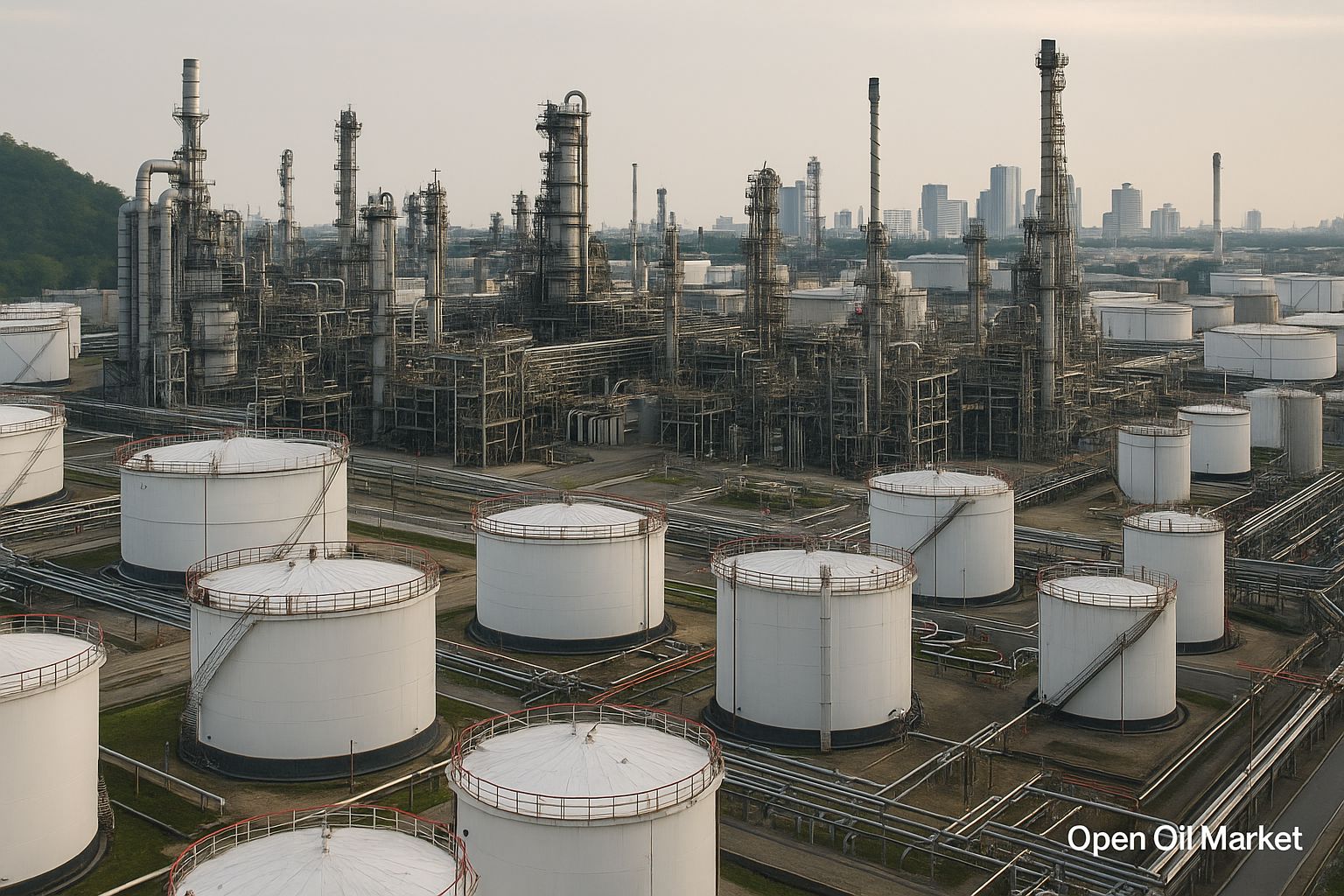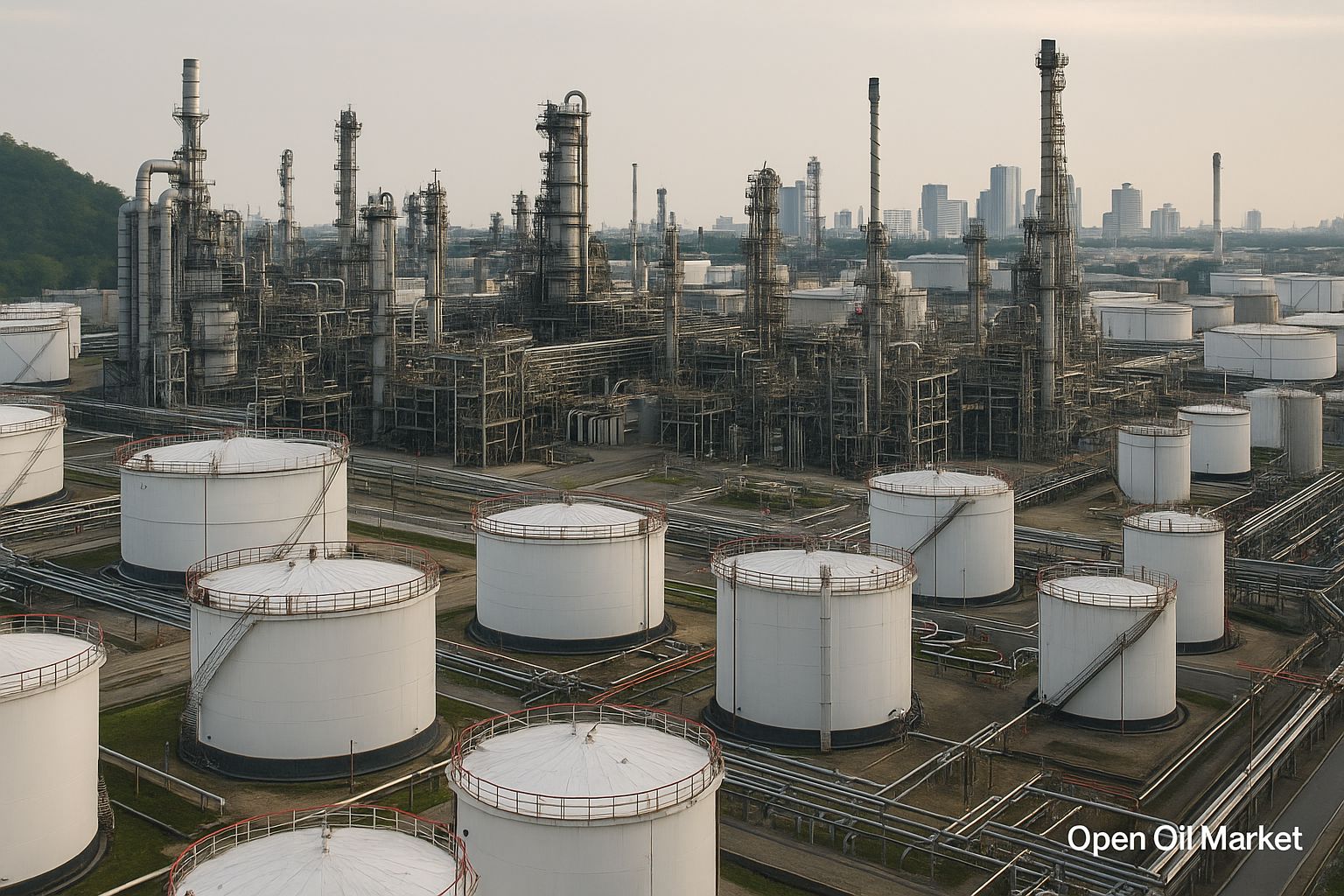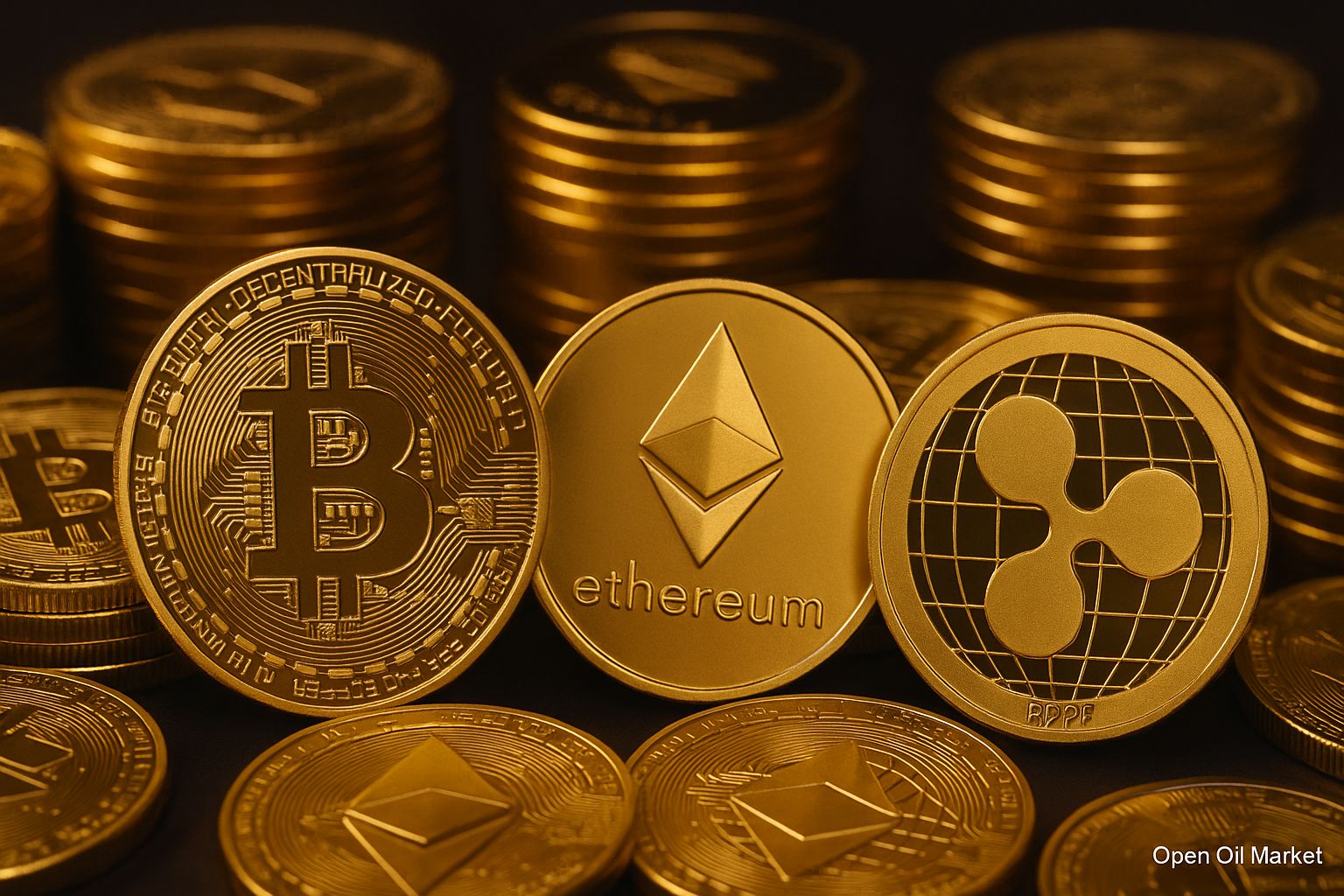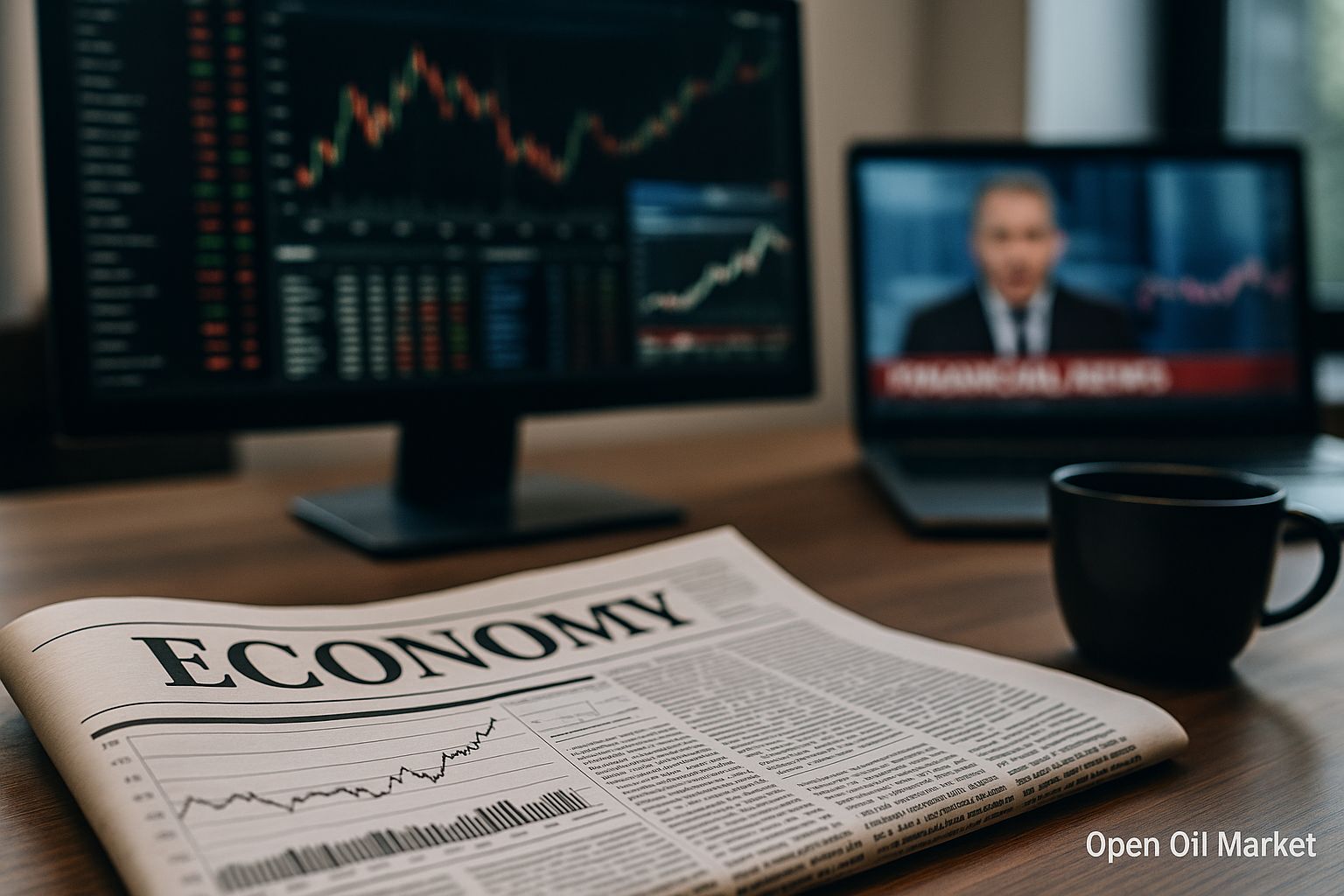
Current Energy Sector News as of August 29, 2025: Oil Around $70, Rising Gas Prices in Europe, Stabilization of the Russian Oil Products Market, Corporate Developments of Major Companies, and Trends in Global Energy.
The current events in the fuel and energy complex (FEC) on August 29, 2025, attract the attention of investors and market participants with contradictory signals. Following an unsuccessful meeting between the presidents of Russia and the United States in mid-August (in Alaska), the dialogue on crisis resolution has effectively stalled. The sanctions confrontation remains without signs of compromise: Washington is prepared to tighten its pressure, while European allies avoid steps that could harm their own economies. Nevertheless, global energy markets are showing relative resilience. Oil prices have gradually recovered from a summer decline: the benchmark Brent crude has returned to around $70 per barrel, reflecting a fragile balance between supply and demand. The European gas market also remains tense: despite record gas volumes in storage, the approaching winter triggers a new wave of price increases. Simultaneously, the global energy transition is gaining momentum — many countries are reporting record generation from renewable sources, although traditional fuels are still utilized for the reliability of energy systems. In Russia, the situation in the domestic oil products market is visibly stabilizing: government measures are beginning to cool prices, and it is expected that the fuel deficit will be overcome in the coming weeks. Below is a detailed overview of key news and trends in the oil, gas, coal, energy, and raw materials sectors as of the current date.
Oil Market: Prices Stabilize Around $70 Amid Surplus Supply
Global oil prices remain relatively stable as August comes to a close after a period of decline. The North Sea Brent blend is settling around $68–70 per barrel, returning to early summer levels. American oil WTI is trading at $64–66 per barrel. While current prices are approximately 10% lower than a year ago, the recent price uptick indicates some market revival. Several fundamental factors are affecting oil price dynamics:
- Increased OPEC+ Production. The oil alliance is gradually boosting supply. In August, the collective production quota for key participants in the agreement increased by about 0.5 million barrels per day; a comparable increase is expected in September. The systematic lifting of restrictions that were in place from 2022 to 2023 is leading to an increase in global oil and oil products inventories, creating excess supply in the market.
- Weak Demand. The growth rate of global oil consumption remains moderate. According to the revised forecast from the International Energy Agency, global demand is expected to increase by only approximately 0.7 million barrels per day in 2025 (for comparison, the growth in 2023 was about 2.5 million). OPEC has also downgraded its expectations to an increase of 1.2–1.3 million barrels per day in 2025. The reasons include a slowing global economy, the impact of high prices from previous years, which have incentivized energy conservation, alongside weakened industrial activity in China.
- Geopolitical Tension. The protracted conflict and sanctions pressure add uncertainty to the market. The lack of progress in negotiations between Russia and the West means that tough restrictions on the export of Russian oil remain in place, maintaining risk premiums in prices. On the other hand, episodic contacts between leaders somewhat alleviate panic, hence prices fluctuate within a relatively narrow corridor — without sharp rallies or crashes.
Overall, the prevailing supply over demand keeps the global oil market in a state of slight surplus. Despite the recent increase, prices remain significantly lower than the peak levels of 2022–2023. Several analysts predict that if current trends continue, the average Brent price could fall below $60 per barrel by early 2026. Further dynamics will depend on OPEC+ actions and the state of the global economy. Meanwhile, relatively low oil prices help curb inflation in importing countries, although they reduce revenues for oil-producing states.
Gas Market: Full Storage Does Not Guarantee Price Stability
Attention in the gas market continues to be focused on Europe. EU countries accelerated gas injections into underground storage throughout the summer in preparation for the autumn-winter period. By the end of August, the average filling level of European gas storage facilities exceeds 93%, significantly surpassing the target of 90% by early November. Such record stocks previously contributed to price declines; however, the approach of cold weather is provoking renewed volatility. Amidst the lack of prospects for a swift resolution to the conflict, traders are pricing in risks of potential supply disruptions this winter. Additional pressure on supply has come from planned technical work on Norwegian fields in the North Sea at the end of August, temporarily reducing gas exports from Norway.
As a result, European exchange prices for gas have turned upward. Near-term futures at the Dutch TTF hub have once again exceeded $400 per thousand cubic meters (approximately €38 per MWh), reaching a monthly peak. In the past week, prices have risen from about $380 to $410, interrupting several weeks of steady decline. Although current levels are far from the record highs of 2022, the market remains extremely sensitive to any risk factors. European consumers continue to compensate for the absence of Russian pipeline gas with record imports of liquefied natural gas (LNG), competing for LNG shipments with Asian buyers at high prices. It is worth noting that the pace of inventory replenishment has now slowed, as storage is nearing its maximum capacity — leaving limited room for further price smoothing. Experts believe that uncertainty surrounding future supplies and weather conditions will maintain increased volatility in the gas market this fall and winter.
International Politics: Dialogue in Stalemate, Sanctions Pressure Intensifies
The past two weeks following the unsuccessful Russian-American summit have brought no progress in resolving the crisis — the diplomatic dialogue has effectively reached a stalemate. Instead, signs of further escalation of the sanctions regime have appeared. The United States is transitioning from words to action: President Donald Trump has ordered from August 27 to increase import tariffs on a range of goods from India by 25 percentage points (to 50%) as punishment for New Delhi's continued import of Russian oil. This unprecedented measure demonstrates Washington's willingness to apply stringent measures against major consumers of Russian energy resources. India has expressed regret and officially protested, stating that purchases of Russian oil are dictated by national economic interests and cannot be instantly curtailed.
European allies of the U.S. are behaving more cautiously. The discussed twelfth package of EU sanctions reportedly does not include new restrictions against Russian energy exports. EU countries have effectively shifted the initiative for the most stringent actions to Washington, considering the dependence of several of their economies on critically important energy supplies. As a result, the sanctions confrontation on the energy front remains tense: the U.S. is increasing pressure on purchasers of Russian oil and gas, while Europe avoids extremes, fearing retaliation against its own energy security.
At the same time, media reports circulate about behind-the-scenes contacts between Moscow and Washington regarding energy issues, which could become part of a broader agreement. Rumors suggest that in August, potential deals were discussed — such as the return of the American company ExxonMobil to the Sakhalin-1 project or the supply of equipment from the U.S. for the under-construction Arctic LNG 2 plant. Even unconventional ideas were considered, such as increasing exports of Russian nuclear fuel to American nuclear power plants. Although there are no official confirmations of this information, the mere existence of such discussions indicates a search for avenues of partial rapprochement between the parties in the energy sector amid the overall political conflict.
Asia: India Defends Its Interests, China Increases Imports and Production
- India: Despite unprecedented external pressure, New Delhi has no intention of abandoning profitable Russian energy resources. Indian leadership openly states that a drastic reduction in oil and fuel imports from Russia is unacceptable for the country's economy. Indian refineries continue to purchase Russian Urals crude at a significant discount — approximately $5 less than Brent, allowing for increased supply volumes. Moreover, imports of Russian oil products (diesel, gasoline) remain high, fully satisfying domestic demand. Concurrently, the country is taking steps to reduce long-term dependence on hydrocarbon imports. Prime Minister Narendra Modi announced on August 15, Independence Day, the launch of a large-scale program for exploring deepwater oil and gas fields. The state company ONGC has already begun drilling ultra-deep wells on the Andaman Sea shelf, with initial results being evaluated as promising. The program's aim is to unlock new hydrocarbon reserves and strengthen India's energy independence. Additionally, on August 21, at a meeting of foreign ministers in Moscow, India and Russia agreed to deepen trade-economic cooperation, clearly indicating that New Delhi intends to maintain energy ties with Moscow despite external pressure.
- China: The largest economy in Asia is also actively leveraging the current situation to strengthen its energy security. Beijing has not joined the sanctions against Moscow and has increased imports of Russian energy resources at reduced prices. According to Chinese customs statistics, in 2024 China imported about 213 million tons of oil and 246 billion cubic meters of natural gas — 1.8% and 6.2% more than the previous year. In 2025, supplies from Russia continue to grow, although their rate has somewhat slowed due to overall economic stagnation. Simultaneously, China is ramping up domestic oil and gas production to reduce reliance on external sources. Despite record investments in renewable energy, the country still relies on traditional hydrocarbon resources to meet basic demand. The Chinese government is investing significant funds in geological exploration and field development, tapping into hard-to-reach reserves. Thus, the two largest consumers in Asia — India and China — continue to play a crucial role in global raw material markets, combining increased imports with the development of their resource bases.
Energy Transition: Records in Green Energy and the Role of Traditional Resources
The global transition to low-carbon energy is maintaining its momentum. Several countries are setting records for electricity generation from renewable sources (RES). By the end of 2024, total generation from solar and wind power plants in the European Union exceeded production from coal and gas-fired power plants for the first time. This trend continues into 2025: the commissioning of new capacities is increasing the share of green energy in the energy balance, while coal usage is gradually declining (after a temporary increase during the 2022–2023 crisis). In the United States, renewable energy is also reaching new heights — in the first half of 2025, over 30% of electricity was generated from RES, with cumulative generation from solar and wind plants for the first time surpassing that from coal-fired plants. China, being the global leader in installed RES capacities, continues to add tens of gigawatts of new solar panels and wind turbines annually, continuously setting new records in green generation.
Massive investments are accelerating the energy transition. According to IEA estimates, total global investments in the energy sector will exceed $3.3 trillion in 2025, with more than half of this amount allocated to RES projects, electrical grid modernization, and energy storage systems. The U.S. plans to introduce about 33 GW of new solar power plants in a year — a record figure, accounting for nearly half of all new generating capacities. However, energy systems still require traditional power plants to maintain grid stability. The rising share of solar and wind introduces new challenges for balancing: during periods of low solar and wind generation, reserve capacities or accumulated energy resources come into play. Thus, despite unprecedented growth in RES, traditional resources continue to play an important role in ensuring reliable energy supply.
Coal: Resilient Global Demand Despite Climate Agenda
Despite efforts to decarbonize the economy, coal retains a significant place in the global energy balance. Global coal demand remains close to record levels in 2025. The main driver is Asia, primarily China and India, where coal-fired power plants and industries (metallurgy, cement) drive economic growth. For these countries, coal remains the most accessible and reliable energy source capable of covering the base load of energy systems. Industry analysts estimate that the total commissioning of new coal capacities worldwide could reach approximately 80 GW by the end of 2025, making this year one of the most successful for the industry in the past decade. While many developed economies accelerate their exit from coal (after a temporary increase in usage during the 2022 crisis), resilient demand from developing countries supports the global coal market. This situation highlights the gap between climate goals and real needs: the share of coal is not decreasing fast enough, remaining significant due to considerations of energy reliability and affordability.
Russian Oil Products Market: Government Measures Cool Prices and Expected Surplus
In Russia’s domestic fuel sector, an active policy to normalize the pricing situation was launched in August. In the first half of the month, wholesale prices for gasoline and diesel on the exchange spiked to record levels, raising government concerns. The main reasons for the jump include seasonal demand increases, scheduled repairs at several refineries, the weakening of the ruble, and the profitability of oil product exports amid high global prices. In some remote regions, a local fuel deficit arose, increasing pressure on retail prices and creating a risk of shortages at gas stations.
The authorities swiftly reacted to prevent a crisis from developing. A temporary ban on the export of automotive gasoline has been implemented since August 15 (tentatively until the end of the month) to saturate the domestic market. Concurrently, relevant ministries adjusted the damping mechanism — a compensation system for oil companies under high export prices. The damping formula was recalculated retroactively from August 1, 2025, thereby increasing payments to oil refiners. This is expected to make gasoline and diesel supplies to the domestic market more attractive for companies compared to exports. According to official statements, the measures taken have already managed to slow the price increase and ensure sufficient fuel supply within the country.
However, industry experts warn that administrative measures provide only a temporary effect. Direct export bans and manual price regulation can only dampen the price surge for a short period. For sustainable stabilization, market-based tools are necessary: a flexible damping mechanism, targeted subsidies for fuel transportation to remote regions, and the improvement of tax policy. The implementation of these measures could help mitigate imbalances without harming refining profitability. Preliminary forecasts suggest that with the comprehensive measures taken, the rate of price increase for gasoline could be reduced to below the overall inflation rate by the end of the year. Nevertheless, oil companies still face a challenging period: a stringent monetary policy (to curb inflation) and persistent restrictions on fuel exports may cut into their margins.
Nonetheless, the situation is gradually balancing out. The government expects that by September, gasoline production volumes will surpass domestic consumption, eliminating the deficit and cooling prices. Oil product reserves at storage facilities have reached record levels (over 5 million tons of gasoline and diesel in total), fully meeting the needs of the domestic market. Control over the fuel sector remains at the highest level: responsible ministries are preparing new proposals to prevent the recurrence of similar crises in the future. As a result, the Russian fuel market is gradually returning to equilibrium after the disruptions earlier in the month.
Corporate News: Dividends, Contracts, and New Projects
Major companies in the Russian fuel and energy complex continue to implement their development strategies despite external pressures. Important events are taking place at the corporate level, significant for investors and shareholders:
- Novatek held a board meeting on August 21, during which the payment of dividends for the first half of 2025 was discussed. Thanks to stable financial results (including high demand for gas domestically and LNG exports), the company is inclined to please shareholders with generous interim dividends. The market positively assessed these expectations, viewing them as a sign of financial stability.
- Gazprom Neft announced a recommendation for dividends of 17.3 rubles per share for the first half of 2025 (decision taken at the board meeting on August 25). At the current share price, this corresponds to a yield of about 3.3% per annum. Despite a slight decrease in profits this year, the company demonstrates its willingness to share profits with shareholders, supporting investor trust in the sector.
- Rosneft reported successful advancement in key production projects. In Eastern Siberia, the company has brought a new oil field to its design capacity, launched under the strategic project “Vostok Oil.” Achieving planned production indicators for oil and associated gas at this asset in the second half of the year will increase the company's overall production volume. Additionally, Rosneft has started producing natural gas at a new cluster site in the Suzun field — this step is part of developing Eastern Siberian clusters aimed at compensating for the decline in production at old fields in Western Siberia.
- Gazprom is reinforcing its presence in Asian markets. In August, the corporation signed a new long-term contract for the supply of liquefied natural gas to one of the major consumers in the Asia-Pacific region. This will increase the loading of Gazprom’s Far Eastern LNG facilities and partially compensate for the reduction of pipeline gas exports to Europe. Simultaneously, the Russian government supports the search for new partners: during bilateral meetings, joint oil and gas projects between Russia and India in the Arctic are being discussed. If these initiatives are implemented, domestic companies will gain access to additional investments and markets, while India will gain access to long-term resources.
The aggregate of these news items indicates that leading players in the Russian fuel and energy complex are not retreating from their development programs despite sanctions and geopolitical uncertainty. Investors perceive the companies’ activity as a sign of the sector’s adaptability: new fields are being launched, dividends are being paid, and contracts are being signed outside conventional directions. This instills moderate optimism and confirms that the FEC remains a pillar of the economy and an attractive area for investment. In the long term, modernization, technology import substitution, and a redirection of export flows to Asia and the Middle East could lay the foundation for a new growth phase in the Russian FEC when external restrictions ease.
**Telegram Channel "Open Oil Market"** – daily analytics and news of the FEC market for professionals. Subscribe to receive timely comments and an overview of key industry events first.




